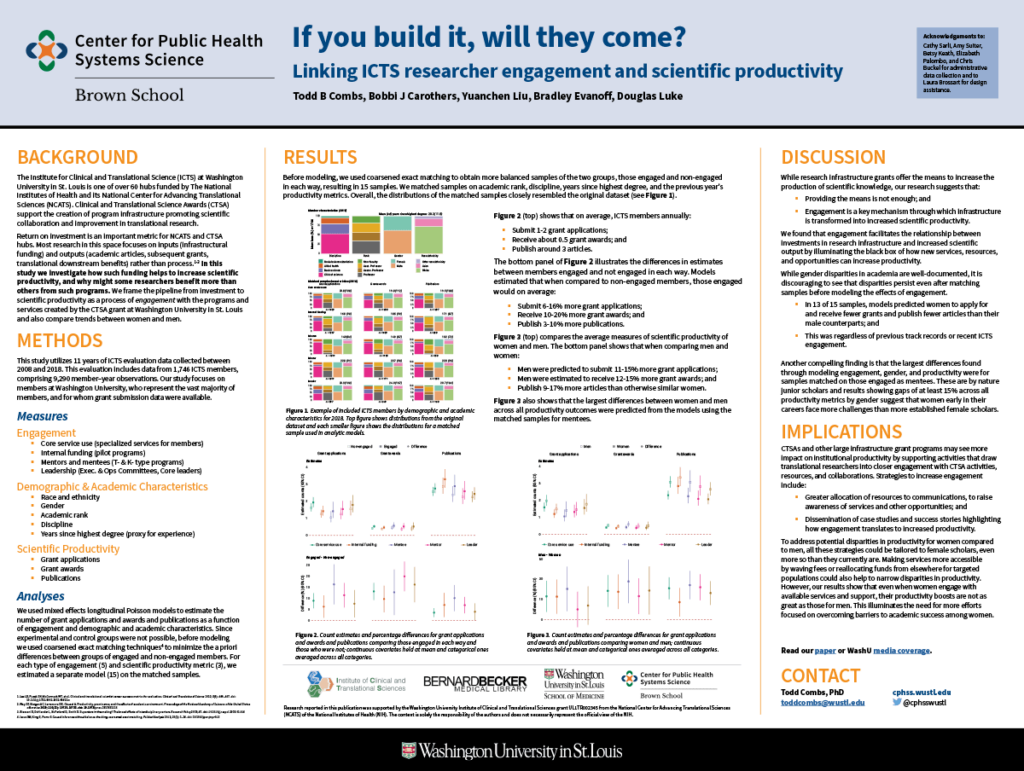Introduction: The NIH Clinical and Translational Science Awards (CTSA) Program supports the creation of program infrastructure promoting scientific collaboration and improvement in translational research. While most evaluations of these and similar programs focus on scientific outcomes such as grants and publications, few studies investigate the underlying mechanisms through which large infrastructure grants produce scientific or translational benefits. This study investigated how engagement – researchers’ interactions with CTSA-funded resources – can help to increase scientific productivity.
Methods: Authors 1) developed process indicators to define engagement in the CTSA infrastructure at Washington University in St. Louis in four general categories (core service use, internal funding, mentor-mentee opportunities, and leadership roles); 2) explored the relationship between CTSA engagement and scholarly productivity; and 3) compared the relationships between engagement and productivity across gender and race/ethnicity. Mixed effects Poisson regressions modeled productivity outcomes on engagement, controlling for demographic and academic characteristics.
Results: CTSA members who were engaged were more likely to publish papers and submit grants when compared to others. They were more likely to receive external grant awards – 10% to 20% percent more – than those who were not engaged. Productivity disparities between men and women and to a lesser extent across categories of race and ethnicity persisted even in samples matched on previous productivity levels.
Impact: CTSAs could see larger growth in scientific productivity by increasing researcher engagement and addressing demographic disparities – possibly through focused communications to raise awareness of opportunities – and dissemination of case studies and success stories of engagement to membership.
Organization – Washington University in St. Louis
Combs TB, Carothers BJ, Liu Y, Brossart LB, Evanoff B, Luke DA
